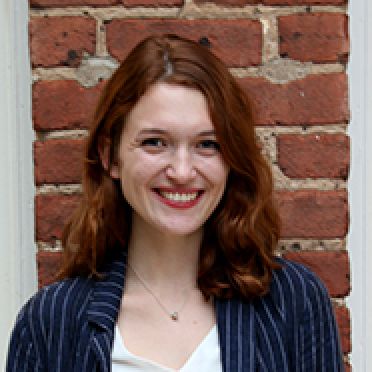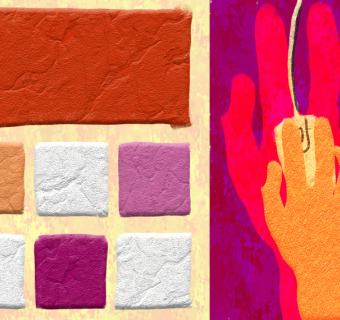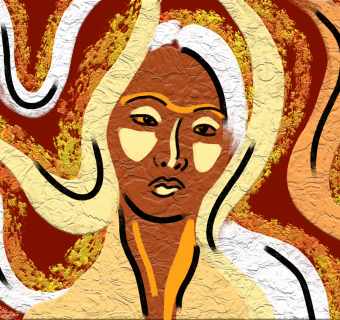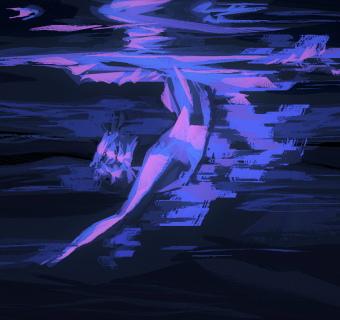I spent 20 days alone while abroad this summer, during which time I had ample opportunity to think about reading; I spent more time thinking about reading than actually reading. I read a lot, between 75 and 100 books per year. I also perform reading a lot, posting almost as many pictures of books on Snapchat and Instagram for no discernible reason. My obsession with books peaked in my first and second years of college, during which time I authorized that vacuum of a non-narrative (girl: reading) to define me. I used excessive reading as a crutch to avoid writing. After my second year I felt like a veneer covering something hollowed out and unsure of its substance beyond the outline of a person and her bookshelf. A hackneyed itinerary of cities and pilgrimages reflecting my romanticized, generic interests surrounded me like shard fragments, and I felt incapable of forming from them a cohesive whole. I felt no need to interrogate this obsessive reading and book collecting until I took a series of trips my bibliophilic self planned and lost my mind.
I brought my partner Akshay along on my first literary tourism stop, an Airbnb “experience” at Book Therapy, the English design bookstore in Prague’s Vinohrady neighborhood specializing in gorgeous titles on architecture, art, food, gardening, and anything that can be documented in an expensive coffee table edition. We would spend three hours alone with wine, cakes, and, of course, books.
We arrived as Jiří, the thoroughly lovely man who owns the shop with his wife, was closing Book Therapy to the public for the evening. It had just started to rain and I felt like Meg Ryan in You’ve Got Mail. Jiří walked us around the shop, pointing out favorite books, sections to save for later (“otherwise you won’t get to anything else”), and luxurious design magazines from a launch earlier that day “in case you’re planning a wedding” (which, we assured him with ample embarrassment, we were not). I asked Jiří about bookshop owning as we wound our way through the store. When I questioned why he established Book Therapy, Jiří explained that he and his wife were entrepreneurs, and had another design shop in District 1. They were eating lunch in Vinohrady when a friend offered to show them a potential space for a different venture. When they saw the empty storefront, they felt it must be a bookstore, and the concept for Book Therapy was born.
Each book felt flower-fresh, modern, and optimized. Each book-object felt like an extension of its contents, its various lifestyle dreams performing themselves through the thing itself.
After Jiří uncorked the wine and locked us in, I ran my fingers across textured spines and embossed covers, anticipating the smells and sounds of buttercream paper and still-stiff bindings. I had never seen such beautiful books, books too busy being books to be bothered with any further purpose. Each promised a taste of an optimized life, where I kept a garden as organized and pristine as the books on the shelves, cooked expert Lebanese food with enough butter to stop the heart, lived zero-waste and looked great doing it, or ruminated on Caravaggio’s oeuvre over a glass of expensive wine (for which there was also a book). Each book felt flower-fresh, modern, and optimized. Their perfect right-angle edges, Helvetica font, vibrant colors, and heavy cardstock were themselves promises of the easy beauty advertised between their pages. (It is easy to forget that book covers, especially design book covers, are advertisements.) Each book-object felt like an extension of its contents, its various lifestyle dreams performing themselves through the thing itself. The crispness of the modern architecture book itself echoed that of the design style it advocated, and the mouth-watering green in the horticulture volumes almost incarnated the plants themselves. I recalled the old media studies epithet the medium is the message as I examined these books about luxury that were luxury itself; in a way, just holding one seemed coterminal with enacting its contents, whether it be building my own greenhouse or vacationing on an untouched island. One could be forgiven for believing if she just paid $50 to have it, she could siphon off a bit of a book’s ethos and glaze it onto herself.
Just as the books perform themselves in their physical structures, and I perform myself by buying one and decorating my house with it (and thus articulating myself), every part of the bookstore’s physical space exuded that crispness, the freshly issued promise of “health, wealth, and wisdom” humming from the shelves. Book Therapy’s aesthetic endorsed a lifestyle ideal which is fashionable now: simple, sustainable, mindful, minimalist, healthy. In many ways, Book Therapy is a product of this era of productive ease, where we are encouraged to excise the superfluous matter in our lives with a Marie Kondo-like ruthlessness, as if our raison d'être was aerodynamism. Though there was only one fiction title in the store (The Portrait of a Lady by Henry James which I bought, read, and adored) the collective force of these lifestyle books created a deeply fictional space of boundless spare time and discretionary income where I could 1) afford to buy these books, and 2) have the time and peace of mind to live out its ideologies. This thought, and the prices of many of the books, reminds me that peace and joy are expensive commodities. But most of the people who thumb through these books will never spend the night in an Australian treehouse. They will never grow their own vegetables or have weddings by the sea. They won’t ferment their own beer, either. They might have art books sitting on their coffee tables all their lives and never see any of the featured paintings in person.
But does this matter? My favorite purchase from Book Therapy is a small blue volume published by The School of Life called How to Travel. It’s a compendium of anxiety-soothing messages about the acts and philosophies of traveling. In the chapter “The Advantages of Staying at Home,” the book brilliantly argues in defense of the daydream of travel, saying:
There will always be something else on the lens between us and the destination we’d come for, something so tricky and oppressive as to undermine the whole purpose of having left home in the first place, namely: ourselves… And that will mean bringing along… anxiety, regret, confusion, guilt, irritability and despair. None of this smear of the self is there when we picture a trip from home.
Maybe the design books are better than the things themselves. The physical incarnation of Marianne Moore’s “imaginary gardens with real toads in them.”
I was 14 when I told my first date to meet me at Lamplight Books in Seattle. I arrived early and wandered between the overstuffed shelves, thumbing through random volumes and surveilling myself. That is, I arrived early so that I would be seen (and see myself) wandering between the overstuffed shelves and thumbing through random volumes. I had a distinct idea of how I intended to be conceptualized, and the spectral white dress, wild (dyed) red curls, and large tome (if I could just find the right one) were all part of an elaborate performance of the self.
Aware that I had staged a performance of sangfroid intellectualism and failed, and feeling that the novel had failed me in its ordained purpose as an accessory to my portrayal of young selfhood, I tossed A Tale aside and haven’t picked Dickens up since.
I reached the back of the store and selected A Tale of Two Cities, settling myself on a stool with my dress arrayed just so. I probably half-read it the way 14-year-old girls who have already internalized the panopticon can. When he arrived—I will never forget this—he took the book from my hands, frowned, and said, “I can’t believe you haven’t read this already.” (It would seem A Tale of Two Cities frequents many high school students’ assigned summer reading syllabus.) Aware that I had staged a performance of sangfroid intellectualism and failed, and feeling that the novel had failed me in its ordained purpose as an accessory to my portrayal of young selfhood, I tossed A Tale aside and haven’t picked Dickens up since.
That date in September 2013 was my first conscious exploitation of literature as an appendage to the person, a customizable apparatus of selfhood, a reflective surface for the ego. Now, too, the pile of books that survived my backpack and sit traumatized in my new Charlottesville apartment are themselves a recapitulation of the self I present to the world. The Second Shelf: A Quarterly of Rare Books & Words by Women (A.N. Devers); Silly Novels by Lady Novelists (George Eliot); Literature & Existentialism (Jean-Paul Sartre); The Novel Cure: An A-Z of Literary Remedies (Susan Elderkin & Ella Berthoud); Women & Power (Mary Beard); The Madwoman in the Attic: The Woman Writer and the Nineteenth-Century Literary Imagination (Sandra Gilbert & Susan Gubar); Days of Reading (Marcel Proust); Invisible Women: Exposing Data Bias in a World Designed for Men (Caroline Criado Perez). This stack of books scans like an index of appendages to my person, reflexively signaling to and realizing an identity. When I communicate my personal canon and its contents outward through social media, I also perform an ideal I have about myself to my “audience.” In so doing, I debase my books from agents of dissociation to objects, ends in themselves I use to festoon myself with identity signals. In this context, then, a book isn’t so different from a hat. Though I no longer fake-read long novels, I know I still engage in performative bookishness more than I’m usually willing to acknowledge.








